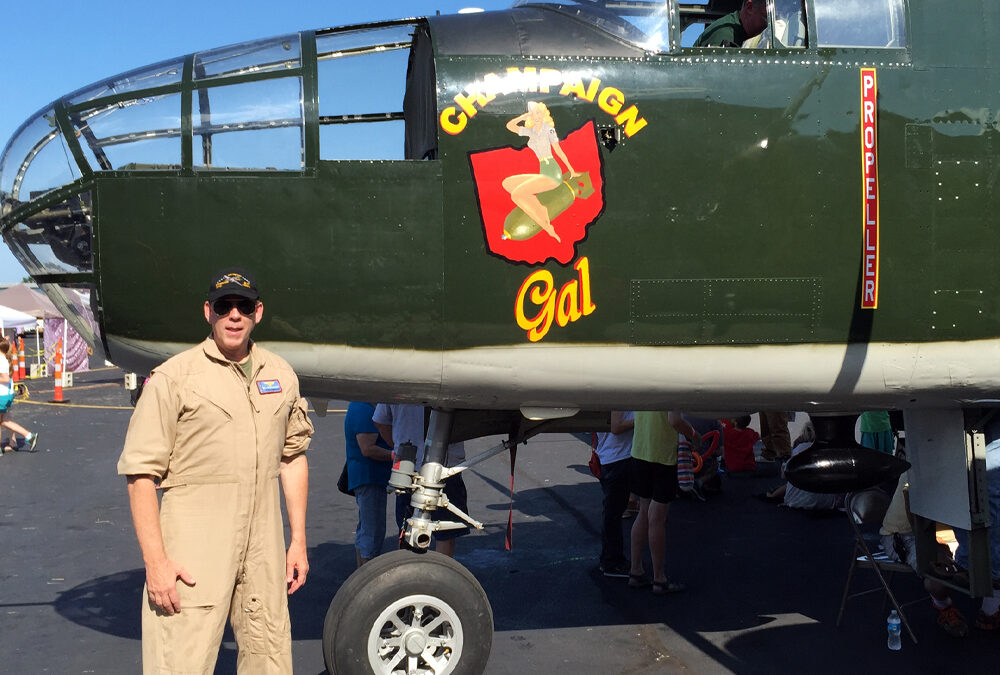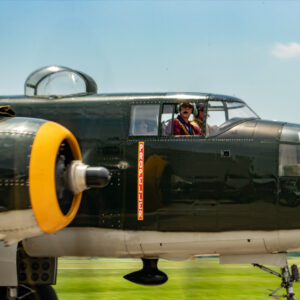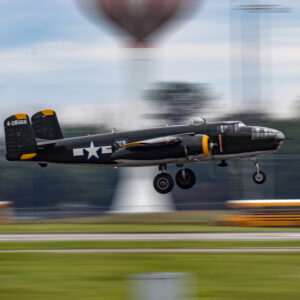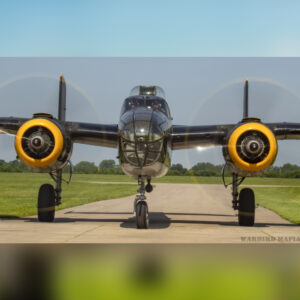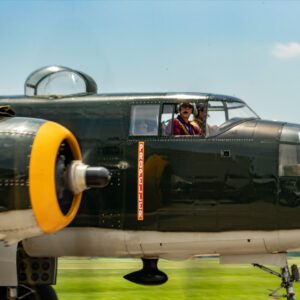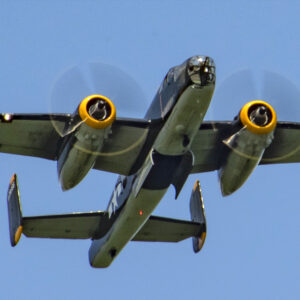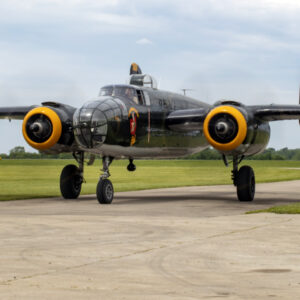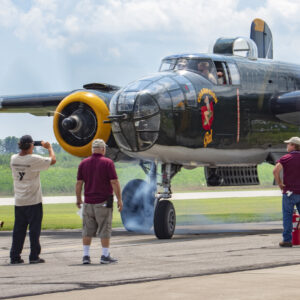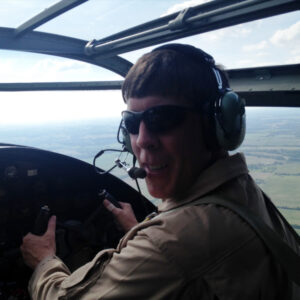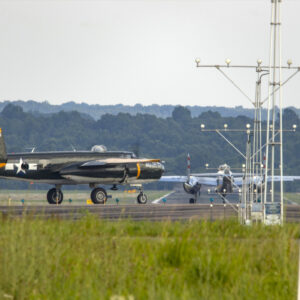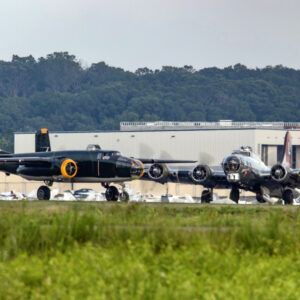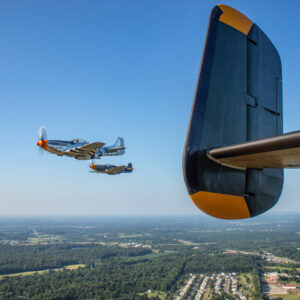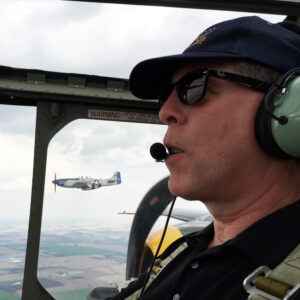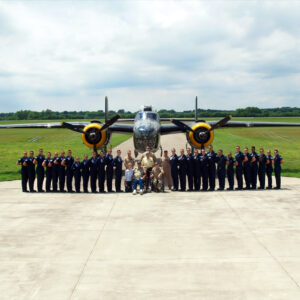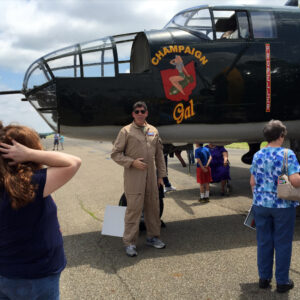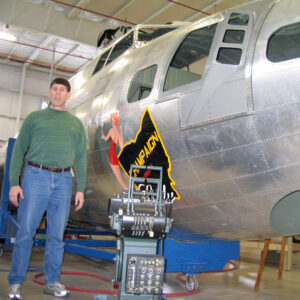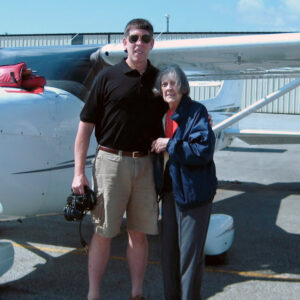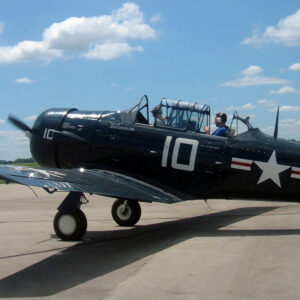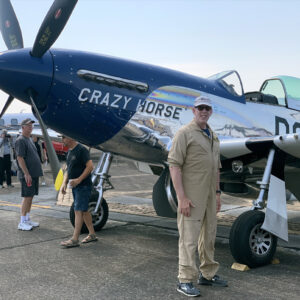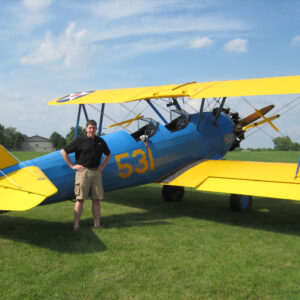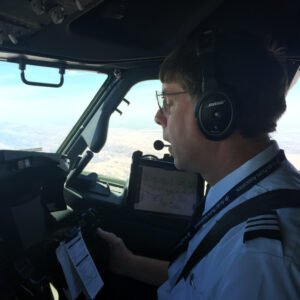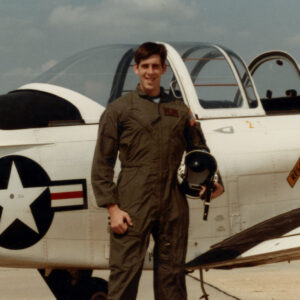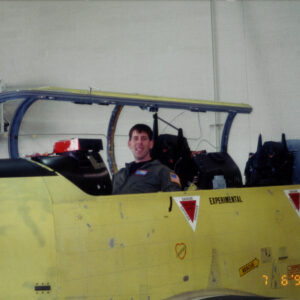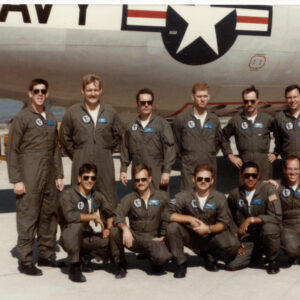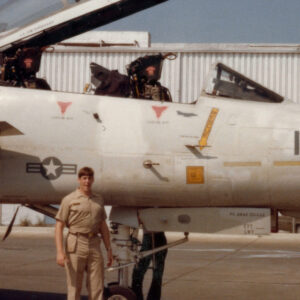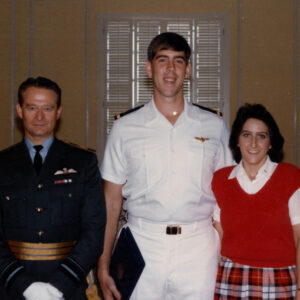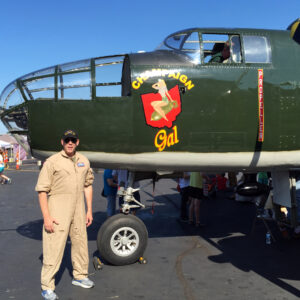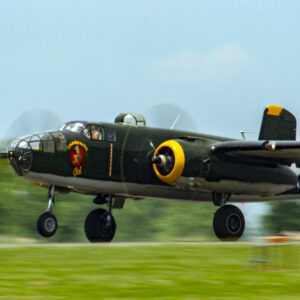Champaign Aviation Museum: B-25 “Champaign Gal”
It all started July 2005, when a fully restored B-17, the Liberty Belle, made a stop at Grimes Field. The city residents gave the plane and its crew a great welcome. This enthusiastic reception left an impression with Tom Reilly, who led the Liberty Belle restoration and was responsible for maintaining that aircraft. A timely call to Carol Hall, airport manager of Grimes Field. Hall recalls, “He said, ‘I have a B-17 project that’s ready to start. Do you know anyone who might be interested in it?’ I said that I knew of someone and that I’d check.” In fact, the man she had in mind, Jerry Shiffer—a local business leader, private pilot, and generous supporter of community causes, including improvements to the airport, happened at that moment to be dining in the airport’s restaurant. Shiffer and his family were among those who flew in the Liberty Belle during its visit, and Hall knew that he was thrilled by the experience. She told him of Reilly’s call. Soon after, Reilly came to Urbana to meet with the Shiffers, and, Hall says, “Within two weeks it all came together.” November 29, the day the first shipment of B-17 parts—including part of the fuselage—was due to arrive at Grimes Field, Shiffer took off from the airfield, by himself, in his twin-engine Cessna 425 Conquest I. He was headed to Montana to ski. However, near Belgrade, Mont., the plane crashed; Shiffer would not return to see the realization of his dream: a flying B-17 museum based at the Urbana airport. Seeing the dream through “We’ll see it to the finish,” says Shiffer’s widow, Leah. “He was so excited that everything was proceeding. He left on a good note. When Jerry got excited about something, he couldn’t wait.” Leah adds, “We want the plane to serve as a reminder of the sacrifices that many men made to protect our freedoms.” Many hours of work by volunteers from around the region and even across the USA are going into restoring the bomber. The project has been going on for over 14 years, with still more left to do. The enormity of the task is apparent. In the hangar, large crates, bins, and warehouse shelving are loaded with a conglomeration of metal parts. A 25-foot-long wing flap rests against a wall. The stripped-down, skeletal frame of the cockpit and bomb bay hangs, steadied by a hoist, for the crew to work on. And many more parts are on the way.

